Last week I was fortunate to be invited along to the Amenity Forum’s Annual Conference, held again at the impressive Pirelli Stadium home to Burton Albion FC.
The Amenity Forum is a voluntary initiative which promotes best practice within the amenity sector. It is funded by member organisations drawn from all sub sectors of amenity who, through this, demonstrate their commitment to the Forum’s objectives and ensure the highest professional standards are maintained. Those who look after and manage amenity spaces undertake an essential role which impacts upon every UK citizen every day, whether it be in terms of clean streets and pavements, quality parks and sports surfaces fit for purpose, operational transport infrastructure, sporting venues or more. To undertake the management of weeds, pests and diseases operators use a wide range of approaches in an integrated approach. This includes mechanical, biological, cultural and chemical methods.

The aim of the conference was to inform and update the 170 plus delegates attending the way the industry is embracing new technologies and realising that collaboration between parties can make a difference to the outcome of weed, pest and disease control in the amenity sector.
Professor John Moverley opened the conference with his usual enthusiastic manner and stated that, “There continue to be many challenges facing the amenity sector in terms of its approach to weed, pest and disease management. The impact of legislation linked to such things as the Sustainable Use and Water Framework Directives is significant as are the cost pressures and other technical challenges. The emphasis is very firmly on adopting integrated approaches and making the most effective use of pesticides. Amenity is in the spotlight. It is important that the sector itself shows it can rise to the challenge and get fully behind best practice and driving up standards. It is important that the sector does this itself and it is not imposed by others and it is important that we stand together in our endeavours. It is also vital that we demonstrate the important and essential nature of weed, pest and disease management in amenity areas.
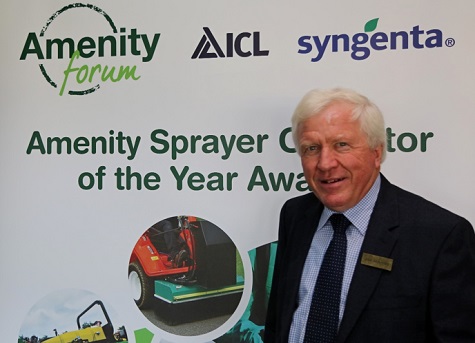
“Today’s conference will seek to address the hot issues, investigate the implications, the approaches available and hopefully find ways in which the challenge can become an opportunity.
“We believe that we have once again assembled an excellent range of speakers and an exhibition area to interest everyone who is involved in managing amenity and sports turf facilities”.
With over fourteen guest speakers it was always going to be a full-on and busy day for both attendees and exhibitors.
This year there were over 20 sponsors/ supporters exhibiting at the conference including BASIS, Bayer, City & Guilds, Complete Weed Control, Greentech, Headland Amenity , Hozelock ICL, JSD Rail, LanGuard VM, Lantra, NSTS, Nomix Enviro, ProGreen, Rigby Taylor, Vale, Weedfree, Harper Adams University, Syngenta, and Kersten.
The conference’s first speaker was Grant Stark representing HSE Chemical Regulations Division who has worked closely with the Amenity Forum for many years. He was keen to point out the ongoing challenges facing our industry in the ongoing policy change to the use of Pesticides.
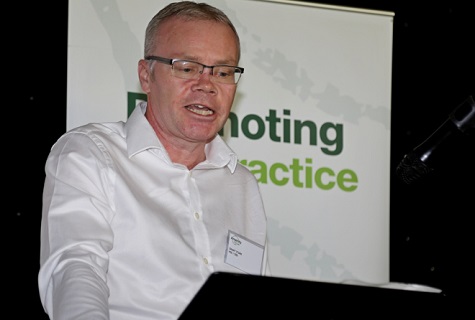
Grant’s key points to the audience was that they need to be focussed on the following issues and challenges that our industry may face in the coming years when considering the use of pesticides.
- Hazard V Risk
- Securing engagement
- Greater recourse to regulatory solutions
- Science and Public opinion
- Continuing squeeze on Pesticide Availability
- New technologies (robotics, Biotechnologies)
- Priorities, IPM, Monitoring and transparency and protecting water.
With the protection of water becoming high on the agenda, he also stated that DEFRA will be working more closely with our industry in the future.
Next up was Professor Michael Eddleston, Professor of Clinical Toxicology in the Pharmacology, Toxicology and Therapeutics Unit of the University of Edinburgh, and Consultant Physician at the National Poisons Information Service, Royal Infirmary of Edinburgh. He trained in medicine at Cambridge and Oxford, with an intercalated PhD at the Scripps Research Institute in La Jolla. His primary research aims to reduce deaths from pesticide and plant self-poisoning in rural Asia, a cause of as many as 200,000 premature deaths each year and the number two global means of suicide.
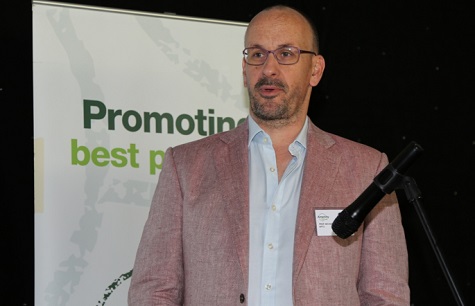
He recently established the Centre for Pesticide Suicide Prevention at the University of Edinburgh to drive research into and implementation of pesticide regulation. He leads the NPIS pesticide surveillance program which collects and analyses data on pesticide exposures presenting to health services in the UK on behalf of HSE.
It was interesting to hear that one of the most common poisoning problems is with children eating rat bate, and the fact that many domestic chemicals are also the cause of poisoning in the UK with very little or no significant numbers of problems associated with professional turf related chemical products. However, we still need to be mindful of the protocols and H&S associated with the use of chemicals and where possible look at IPM strategies that will help control weeds pests and diseases.
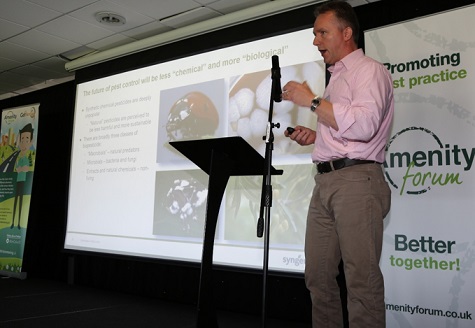
This was followed by a talk on 21st Century Innovation in crop protection by Dr David Hughes from Syngenta the use of new biological control methods such has changing the DNA of the plant to resist disease and the improved technologies to deliver these strategies using automatic and drone devices.
We then enjoyed a much needed tea break where delegates were able to catch up with the many exhibitors promoting their services at the conference.
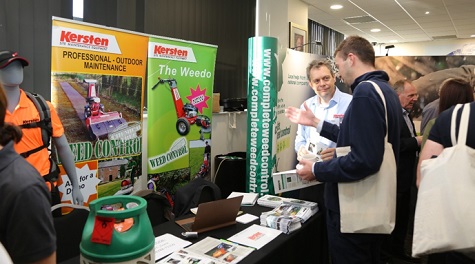
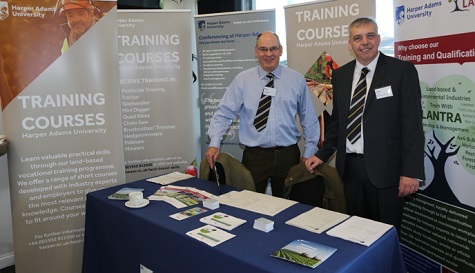
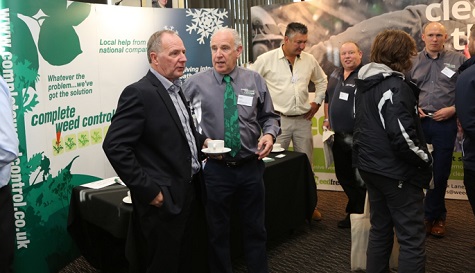
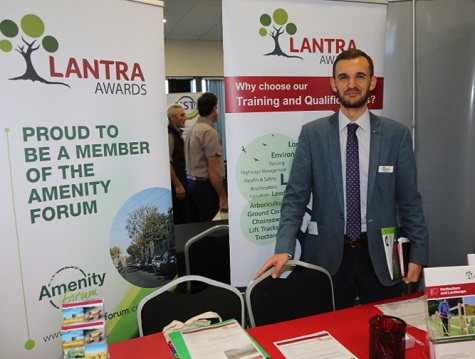
After tea break, there followed a quick fire presentation by five guest speakers on the merits of Integrated Pesticide Management Techniques currently being used in the industry. First up was Micheal Fance from Aquatrols who gave a talk on the importance of good soil management.
This was followed by Stephen Jelley, from Rootwave who gave a talk on non-chemical approaches that focussed on the work his company was doing using electric weed control systems. RootWave Pro is an award-winning professional hand weeder designed for growers, gardeners and groundskeepers to spot weed and treat invasive species.
The device generates a high voltage between 2,000- -5,000 volts to kill a wide range of vegetative plant material.
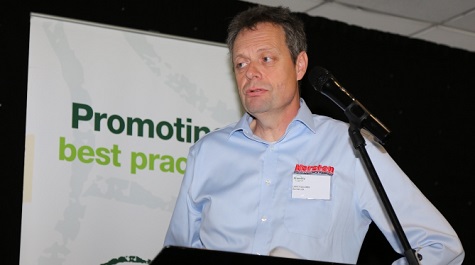
We then heard from Chris Faulkner (Kersten) UK LTD, who spoke about sweeping techniques and the machinery now on offer to keep our hardstanding areas free of weeds. By eliminating the build-up of surface detritus we can reduce and control the amount of weed on hard surfaces.

Next up was Chris Humphrey, technical manager from Colliers Turf who gave a talk on importance of establishment and management of amenity grass as part of IPM strategies. Relating to four key areas of management of turf understanding; the environment, cultural practices, nutrition and fungicides. It was then left for Lewis Blois from Bayer to talk about current chemical products that are now in use that can work in conjunction with IPM strategies.
It was then time for the Amenity Forum to announce the winners of this year’s 2019 Amenity Sprayer Operator of the Year, whose main sponsors are ICL and Syngenta. BASIS registration also offer free training vouchers for the winners.
Each category winner received a trophy and framed certificate. The overall winner will now be decided upon and be announced at BTME in Harrogate in January. The overall winner is awarded the Amenity Forum Shield and earns him or herself a choice of amazing prizes.
Professor John Moverley, Independent Chairman of the Forum, said “The Amenity Forum is the voluntary initiative for this important and essential sector. We promote best practice and these awards are a demonstration of the high professional standards in our sector.”
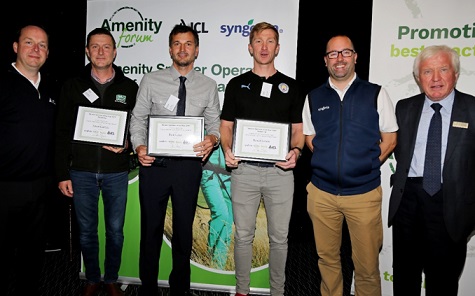
The category winners were:
LANDSCAPE AND INDUSTRIAL USING HAND HELD & TRACTOR MOUNTED EQUIPMENT
- Winner: Ian Millward, Millward Forestry
- Runner up: Daniel Lewis, Manchester City
SPORTS TURF USING TRACTOR MOUNTED & HAND HELD EQUIPMENT
- Winner:Paul Gater, Caldy Golf Club
- Runner up: Jason Garlick, JMG Amenity
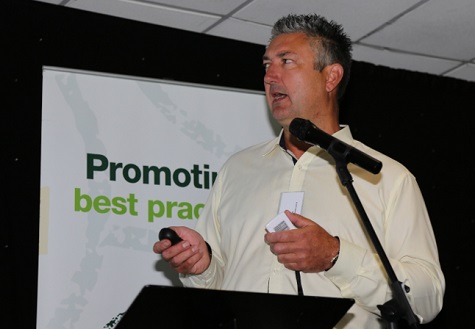
The afternoon session soon got under way with an interactive session run by Ian Graham from Complete Weed Control who gave out 50 responders for the audience to answer some interesting questions relating to the use of Glysophate. Ian was also concerned about the negative press there has been on Glysophate in recent years and how we should as an industry try to promote the benefits of the use of this product and emphasise the benefits it brings in controlling weeds in amenity situations.
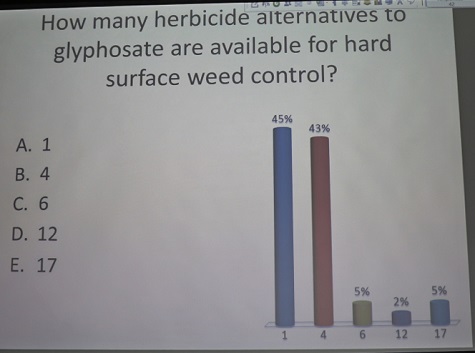
The forum’s penultimate speaker was a good friend of mine, Mike Hinton, from Birmingham City Council. We in fact started our careers together back in the 1970s undertaking a five year apprenticeship scheme. Mike is now responsible for managing several parks in Birmingham and spoke about the challenges he faces keeping them open, clean and appealing to the public.
Tom Young from the STRI then gave an engaging talk on the development of football stadiums from the 1970s to the present day. He talked about new construction techniques and development of new products, namely the fibre reinforced pitches that came about in the 1980s / 90s. He moved on to speak of the rapid stadium design that now incorporates many sustainable features, particularly when dealing with water resources. With many new stadiums having water storage / recycling attributes to safeguard this precious resource. There are even stadiums being built now with green roofs to help urban cooling.

The final speaker of the day was Jim McKenzie, MBE, Director of Estates and Golf Courses, Celtic Manor who also spoke about the challenges of managing a large golfing resort and keeping the customers happy and contented with the quality of the course. Over the years he has developed many new maintenance regimes to keep the course in tip top condition throughout the year. Neary all major renovation works are completed in late October / November when usage is at its lowest peak. Jim certainly gave an interesting insight to the work and pressures involved when maintaining a high expectation golfing resort.
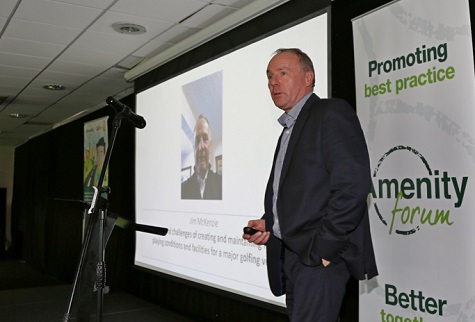
It was then left to John Moverley to close the conference, not before announcing a brand new Amenity Standard that will be formally launched in January 2020. This Standard is akin to the Red Tractor in food and agriculture. Those operating to the Standard and displaying its logo will demonstrate their adherence to recognised assured standards in all tasks undertaken.
There is much greater public and political interest related to weed, pest and disease management, especially linked to chemical use. The reasons why chemicals need to be used, as part of a fully integrated approach, in seeking to provide safe, healthy amenity spaces and sports surfaces, is not always clear to the public and stakeholders.
The wider public users of amenity spaces need to have clear assurances that all those involved in creating and maintaining safe, healthy sports grounds and other amenity spaces, operate at the highest professional standards; and whether using chemical or non-chemical methods, such operations are undertaken by competent, trained personnel following well designed and managed plans.
The Amenity Standard is a bespoke quality management standard that has been developed, as a partnership, by all sides of the amenity sector. Those operating to the Standard will be committed to an integrated approach to amenity management and to the highest professional standards. They will be members of an approved assurance scheme recognised by the Standard. The cost of operating the Standard is covered by fees from providers of these recognised assurance schemes and there will be no extra cost to individual organisations.
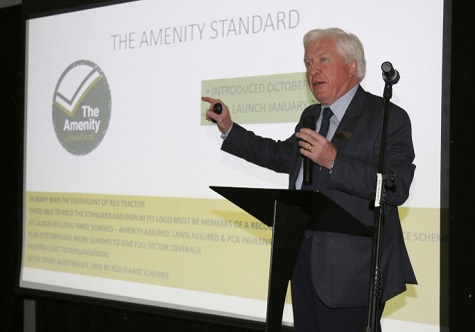
The Amenity Standard is designed to:
- Provide an industry benchmark
- Provide a basis for continuous improvement
- Focus on quality as an objective
- Provide assurances about the quality of the approved organisation and maintenance of the amenity space
- Ensure that quality assurance scheme operators recognised under this Standard use auditors with technical knowledge and experience of the sector concerned
- Promote confidence in organisations operating and providing resources in the amenity sector by provision of a robust and transparent standard
The Amenity Standard will be operated by the Amenity Forum who will maintain, review and regularly update matters as required. They will audit each scheme operator to quality assure that they are operating to agreed standards. In turn, the scheme operators audit their members and approved organisations to assure that they are meeting the requirements of the Amenity Standard. At its launch, three Assurance Schemes are to be recognised by the Standard – the Property Care Association Scheme for Invasive Weed Management and two schemes offered by BASIS Registration, Lawn Assured and Amenity Assured. The aim is for more schemes to be recognised as the Standard develops so that all sectors of amenity are covered.
The need to move quickly on this is recognised by the sector. Clearly embedding the Amenity Standard will need time; it is not a quick fix. Its introduction will need to be accompanied by a communication strategy both externally and internally. However, if this step is not taken, the great progress made to date in increasing the recognition of the professionalism within the amenity sector may be threatened. It will not always be easy, but it is the right step, at the right time.
Hopefully the logo will soon appear on amenity areas across the UK and be held with pride by operators. For more information contact admin@amenityforum.net